Hoops Rumors is checking in on the 2024 offseason for all 30 NBA teams, recapping the summer’s free agent signings, trades, draft picks, departures, and more. We’ll take a look at each team’s offseason moves and consider what might still be coming before the regular season begins. Today, we’re focusing on the Cleveland Cavaliers.
Free agent signings
- None
Trades
- None
Draft picks
- 1-20: Jaylon Tyson
- Signed to rookie scale contract (four years, $16,118,700).
Two-way signings
- Emoni Bates
- JT Thor
- Note: Thor’s deal has been reported but isn’t yet official.
Departed/unsigned free agents
- Damian Jones (Zhejiang)
- Isaiah Mobley (unsigned)
- Marcus Morris (unsigned)
- Pete Nance (unsigned)
- Isaac Okoro (unsigned)
- Note: Okoro is a restricted free agent; the Cavaliers still have a $11,828,974 qualifying offer on the table.
- Tristan Thompson (unsigned)
Contract extensions
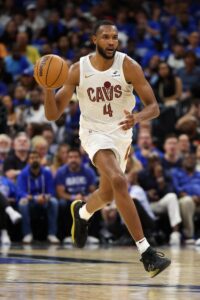 Signed Evan Mobley to a five-year, maximum-salary rookie scale extension that begins in 2025/26. Projected value of $224,238,150 (starting at 25% of the cap). Projected value can increase to $246,661,965 (27.5% of the cap) or $269,085,780 (30% of the cap) if Mobley meets Rose Rule performance criteria. Includes 15% trade kicker.
Signed Evan Mobley to a five-year, maximum-salary rookie scale extension that begins in 2025/26. Projected value of $224,238,150 (starting at 25% of the cap). Projected value can increase to $246,661,965 (27.5% of the cap) or $269,085,780 (30% of the cap) if Mobley meets Rose Rule performance criteria. Includes 15% trade kicker.- Signed Donovan Mitchell to a three-year, maximum-salary veteran extension that begins in 2025/26. Projected value of $150,316,884. Includes third-year player option.
- Signed Jarrett Allen to a three-year, $90,720,000 veteran extension that begins in 2026/27.
Salary cap situation
- Operating over the cap ($140.6MM) and below the luxury tax line ($170.8MM).
- Carrying approximately $159.8MM in salary for 12 players.
- Note: This figure would increase to $173.7MM if Okoro’s qualifying offer and a 14th man on a veteran’s minimum contract were added.
- No hard cap.
- Full mid-level exception ($12.8MM) available.
The offseason so far
Entering the summer, there was speculation that the Cavaliers could be one of the most active teams on the trade market this summer, potentially breaking up their star duos in both the backcourt (Donovan Mitchell and Darius Garland) and frontcourt (Evan Mobley and Jarrett Allen).
Instead, the Cavs doubled down on their top four players, signing three of them to long-term extensions this offseason. Mitchell is now locked up for at least the next three seasons, with Garland under team control for the next four, Allen for the next five, and Mobley for the next six.
That doesn’t mean Cleveland can’t pivot down the road if the team ultimately decides that the skill sets of Mitchell and Garland or Mobley and Allen overlap too much — all four players should continue to have positive trade value on their current contracts. But for now, the front office is betting this roster still has another level to reach with continued growth from that quartet and the influence of a new head coach.
Despite getting the Cavs their first playoff series win since LeBron James was on the roster, head coach J.B. Bickerstaff was dismissed following the club’s second-round loss to Boston. Reporting in the wake of his ouster suggested that he and multiple Cavs players – including Mitchell – weren’t necessarily on the same page, so perhaps moving on from Bickerstaff was a necessary step to secure the All-Star guard’s commitment beyond the 2024/25 season.
Mitchell’s influence could be felt in the Cavs’ subsequent coaching search — the All-Star guard reportedly endorsed eventual hire Kenny Atkinson for the job. The team also brought in former Jazz assistant Johnnie Bryant, who was close with Mitchell in Utah, to be Atkinson’s associate head coach.
Outside of the coaching change and extensions for Mitchell, Mobley, and Allen, it has been an awfully quiet summer so far for the Cavaliers, who are the only team in the NBA not to have signed any free agents to standard contracts or acquired any players via trade. The lone newcomer to date is first-round pick Jaylon Tyson, a 6’6″ wing coming off a breakout year for Cal who will be looking to crack Cleveland’s rotation in his rookie season.
Up next
With just 12 players on standard contracts, including 10 on fully guaranteed deals, there’s still work to be done in Cleveland. Even if Sam Merrill and Craig Porter – whose salaries aren’t yet guaranteed – make the regular season roster as expected, the Cavs will need to add two players to that group before opening night.
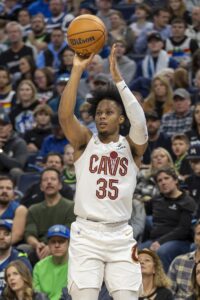 One of those two could be Isaac Okoro, the league’s last remaining restricted free agent. The two sides appear to have stalled in negotiations, with the Cavs said to prefer a multiyear deal in the neighborhood of $8-10MM per year, while the former lottery pick is presumably seeking something in at least the mid-level range ($12-14MM annually).
One of those two could be Isaac Okoro, the league’s last remaining restricted free agent. The two sides appear to have stalled in negotiations, with the Cavs said to prefer a multiyear deal in the neighborhood of $8-10MM per year, while the former lottery pick is presumably seeking something in at least the mid-level range ($12-14MM annually).
Cleveland has reportedly discussed possible sign-and-trade scenarios involving Okoro, including one concept involving Nets forward Dorian Finney-Smith. But all indications are that none of those talks have gained serious momentum, so a return to the Cavs still looks like the most likely outcome for Okoro, whether he accepts his one-year, $11.8MM qualifying offer or reaches an agreement on a longer-term contract.
If Okoro re-signs – or if the club acquires just a single player in a sign-and-trade deal for him – the expectation is that the Cavs will finalize their roster by signing a “cost-effective, playable, end-of-bench veteran” to be their 14th man, according to Chris Fedor of Cleveland.com, who suggested that player would ideally be a locker-room leader like Tristan Thompson was last season. Marcus Morris, who finished the 2023/24 campaign in Cleveland, is one possibility.
Unless the Cavaliers let Okoro walk, bring him back on a very team-friendly deal, or trade him for a player with a modest cap hit, their team salary will almost certainly surpass the luxury tax line – or be right up against that line – once they have 14 players under contract, so the belief is that they’ll keep their 15th roster spot open at the start of the regular season to maintain roster flexibility and save some money.
The Cavs will have one more two-way slot to fill once they officially complete their reported agreement with JT Thor. Isaiah Mobley and Pete Nance, each of whom finished last season on two-way deals in Cleveland, are options. The club could also look outside of the organization for that last spot, as it did with Thor. Draft-and-stash prospect Luke Travers is also in the mix for that spot, though his next steps after leaving Melbourne United remain up in the air.
Cleveland entered the season with four veterans slated to be extension-eligible this offseason. With three of those four already signed to new contracts, forward Dean Wade – who will become eligible next month – is the last possible extension candidate to watch. I think the Cavs like Wade and would extend him if the price is right, but he’s coming off a couple injury-plagued seasons, so unless they’re getting him at a discount, the front office may prefer to wait on a new deal.
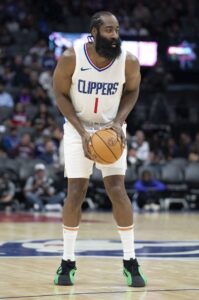
 While the new second tax apron likely played a part in the Clippers’ decision to draw a hard line in their negotiations with George, the fact that the team had won just three total playoff games – and no playoff series – in the past three years presumably factored into that decision too.
While the new second tax apron likely played a part in the Clippers’ decision to draw a hard line in their negotiations with George, the fact that the team had won just three total playoff games – and no playoff series – in the past three years presumably factored into that decision too.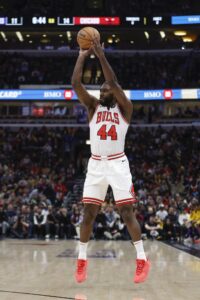
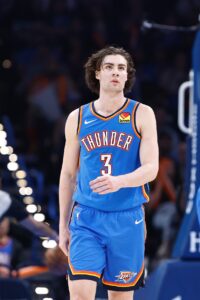 The most interesting move of the Bulls’ summer was trading defensive ace
The most interesting move of the Bulls’ summer was trading defensive ace 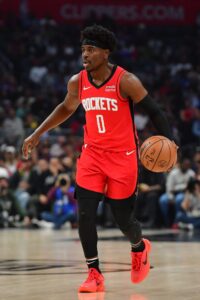
 The team also made a minor move on the trade market by acquiring
The team also made a minor move on the trade market by acquiring 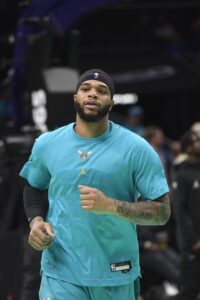
 The Hornets’ 2024 lottery pick doesn’t come without risk either, albeit for entirely different reasons —
The Hornets’ 2024 lottery pick doesn’t come without risk either, albeit for entirely different reasons — 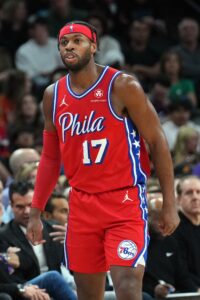
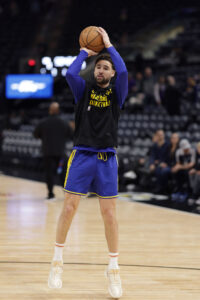 It was the end of an era this summer in the Bay Area, as four-time champion
It was the end of an era this summer in the Bay Area, as four-time champion 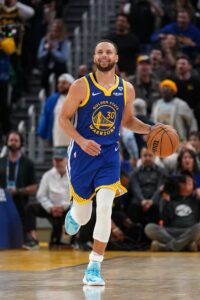 I wouldn’t necessarily expect Moody to get a new deal this summer or fall. His playing time has been inconsistent in his first three seasons, so the Warriors will be reluctant to pay him big money based on his career achievements so far, while Moody will be reluctant to lock in a long-term deal before he gets a chance to show what he can do with a more regular role.
I wouldn’t necessarily expect Moody to get a new deal this summer or fall. His playing time has been inconsistent in his first three seasons, so the Warriors will be reluctant to pay him big money based on his career achievements so far, while Moody will be reluctant to lock in a long-term deal before he gets a chance to show what he can do with a more regular role.
 That meant trading three-and-D standout
That meant trading three-and-D standout 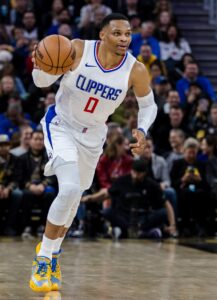
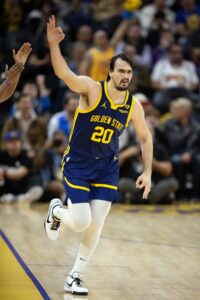 Losing Caldwell-Pope allowed the Nuggets to free up their taxpayer mid-level exception, which they used to sign stretch forward/center
Losing Caldwell-Pope allowed the Nuggets to free up their taxpayer mid-level exception, which they used to sign stretch forward/center 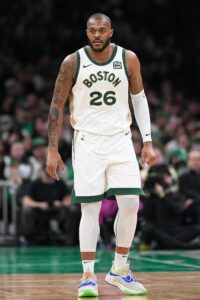
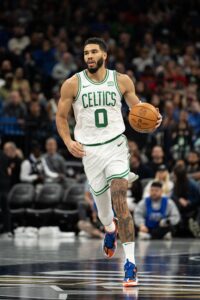 Besides re-signing most of their own free agents, the Celtics agreed to long-term extensions with All-NBA forward
Besides re-signing most of their own free agents, the Celtics agreed to long-term extensions with All-NBA forward 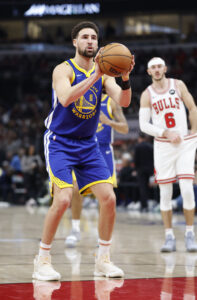
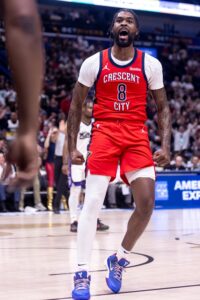 That didn’t happen though. Instead, Jones opted to sign a three-year, $30MM contract with the Clippers, prompting the Mavs to pivot to another free agent,
That didn’t happen though. Instead, Jones opted to sign a three-year, $30MM contract with the Clippers, prompting the Mavs to pivot to another free agent,